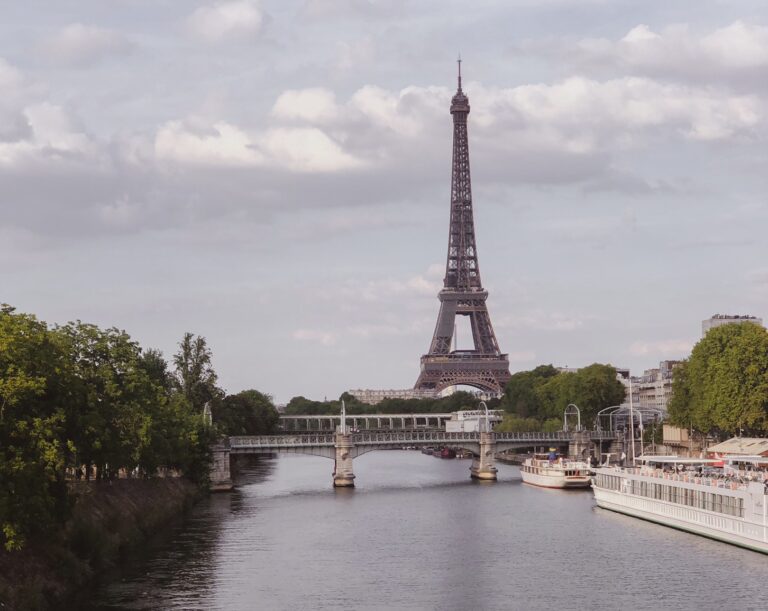21 Amazing Reasons to Visit Germany in 2025
Germany is one of the most beautiful countries in the world. Having lived there as a kid and visited several times since then, I have explored many parts of the country. From the history and scenery to the infrastructure and culture, there are lots of reasons to visit Germany.
Learn why you should add this important Central European country to your bucket list!
21 reasons to visit Germany
Here are 21 amazing reasons to plan a trip to Germany, in no particular order:
1. Learn about its rich, complex history
German history is so much more than its Nazi past, but one of the things I have always admired about Germany is that they are one of the few countries that have collectively acknowledged its past failures.
They have taken clear steps to never forget and to make sure something similar never happens again. It’s something many other countries could learn from.
This national remembrance is clear from the number of Holocaust memorials, concentration camps, museums, and other monuments that are maintained throughout the country.
A few notable places to visit to learn about Germany’s World War II history include:
- Checkpoint Charlie
- Berlin Wall
- Auschwitz, Buchenwald, or another concentration camp
- Holocaust Memorial

But don’t stop at learning about Nazi history! Germany goes back to way before the Middle Ages, and so much of what makes up the culture today can be attributed to these earlier days.
- Tour old churches such as the Cologne Cathedral that dates back to the 13th century and learn about the divisions between the Catholic and Protestant churches.
- Visit the Zwinger palace in Dresden to witness the wealth of Saxony’s kings during the Baroque period.
- See the Brandenburg Gate in Berlin—constructed in the late 18th century—a symbol of Germany’s peace and unity.
…just to name a few!
🗺 Did you know Germany is home to 51 UNESCO World Heritage sites? Check out the full list of sites here.
2. Hike in the stunning Bavarian Alps
A small portion of Germany’s geography is mountainous, located primarily in Bavaria in southern Germany. That’s where the Alps cross over from Austria and Switzerland, and you can find Germany’s highest point—Zugspitze—with an elevation of 9,718 feet!
One of my favorite places in the Bavarian Alps (and all of Germany really) is Königssee, a large alpine lake surrounded by mountains. You can purchase tickets for a boat ride across the lake to the Sankt Bartholomä church.
Along the way, one of the boat workers blows a trumpet so you can hear the sound echoing from the mountains. The water of the lake is crystal clear, and apparently some of the cleanest in all of Germany. The whole experience is unforgettable.

3. Tour fairytale castles
Did you know Germany has more than 20,000 castles? Some of the most famous castles in the world can be found here. My personal favorites are Neuschwanstein Castle and Eltz Castle, but there are many more worth seeing.
Neuschwanstein Castle is what many say the Disney castle was modeled from. It is one of the largest castles in Germany, and it’s hard for me to say what’s more beautiful—the castle or the surrounding scenery. It’s perched on the top of a hill not far from the Austrian border and its towering Tirol Alps.
The best view of Neuschwanstein can be seen from the Marienbrücke (Maria Bridge), which is a fairly easy hike from the castle. Hohenschwangau Castle is also within walking distance from Neuschwanstein and has beautiful gardens to walk through.
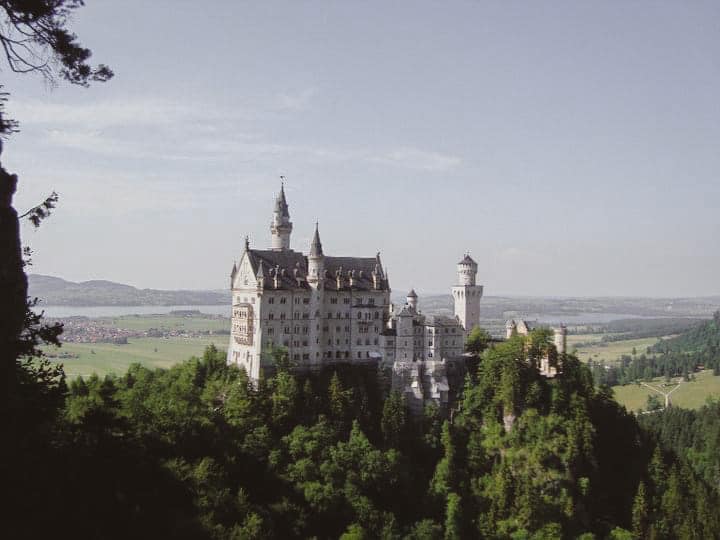
Eltz Castle goes all the way back to the 12th century and is known for its medieval architecture. It is located between Koblenz and Trier on the western side of Germany. If you make it here, it’s worth seeing Bürresheim Castle as well, which has real storybook charm.
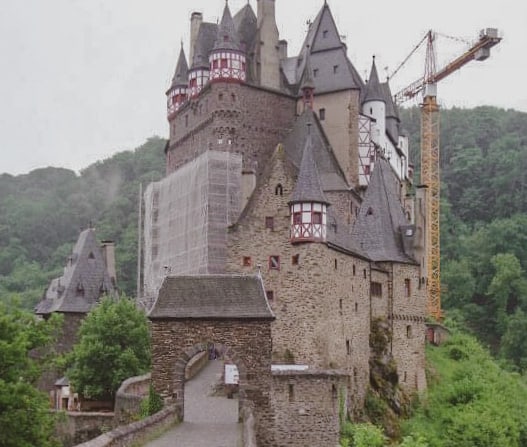
Other noteworthy castles in Germany include:
- Heidelberg Castle
- Nürnberg Castle
- Cochem Castle
- Hohenzollern Castle
- Lichtenstein Castle
4. Swim in crystal-clear lakes
Another great reason to visit Germany is to see its beautiful, clean lakes. Aside from the stunning Königssee mentioned in #2, there are dozens of other lakes in Germany that are perfect for swimming and boating.
The Bodensee (Lake Constance) is on the southern border of Germany and is shared by Austria and Switzerland. It is the third largest lake in Central Europe. Mainau Island is on the Bodensee and is known as the “flower island,” famous for its intricate gardens and floral designs.
More popular lakes in Germany include Lake Müritz, Chiemsee, and Walchensee.
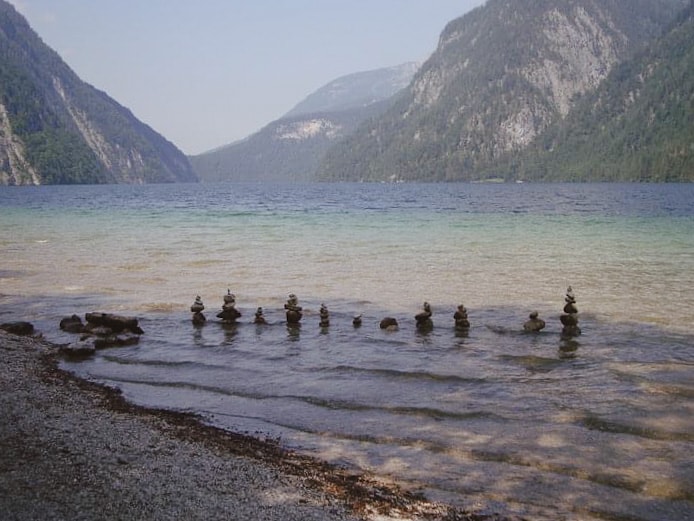
5. Wander through dense forests
When I think about my visits to Germany, long walks in the forest come to mind. Germans value walks in nature, and there are endless hiking and walking trails throughout the country where you can enjoy the fresh air.
The largest forest in Germany is Schwarzwald (Black Forest), where the famous Schwarzwald Kirschtorte (Black Forest Cherry Cake) got its name. There are dozens of trails of varying difficulty throughout the forest.
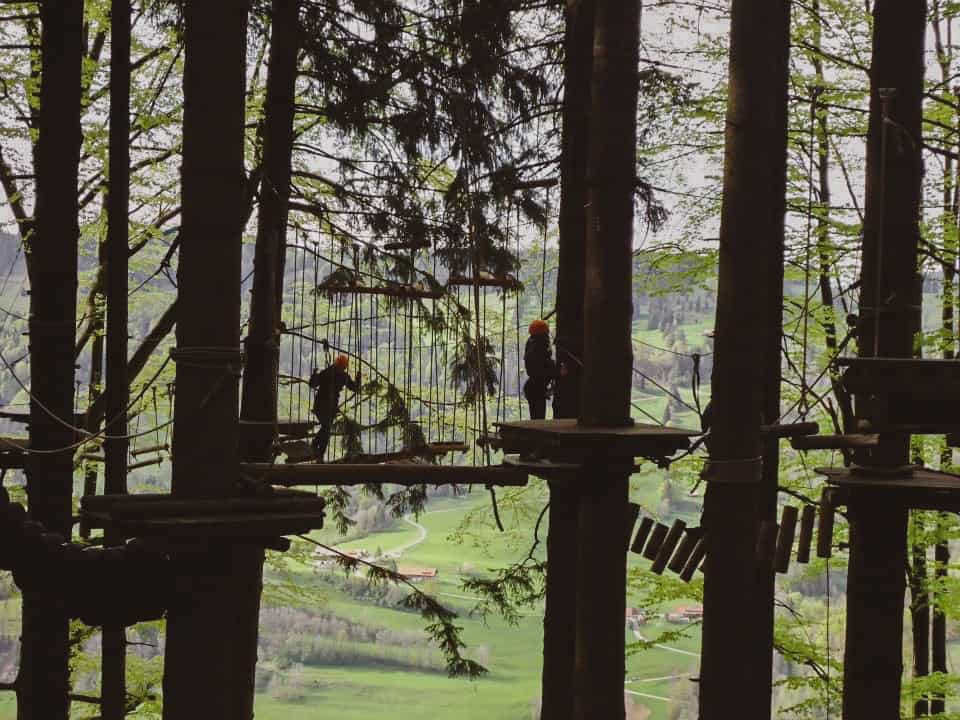
6. Enjoy beautiful parks
What I love about Germany’s park system is that they incorporate natural elements into the overall design. I remember as a kid visiting playgrounds that were made almost entirely of wood or hiking with my parents and seeing wooden activity stations for kids at various trail markers.
When materials like metal and plastic are used, the colors are subtle so they blend in with nature—like with this summer toboggan run through the mountains!

7. Take time out at the beach
Northern Germany is a region I still want to visit. I have heard that it shows a completely different side of Germany. When most people think of Germany, they likely picture castles and mountains, but there is a marine aspect to the country as well.
Hamburg is the largest city in northern Germany and a hub of sea commerce and transportation. They even have their own sandy beach along the Elbe river, which feeds into the North Sea.
Even further north are popular beach destinations like Sylt, Rügen, Föhr, and Langeoog.
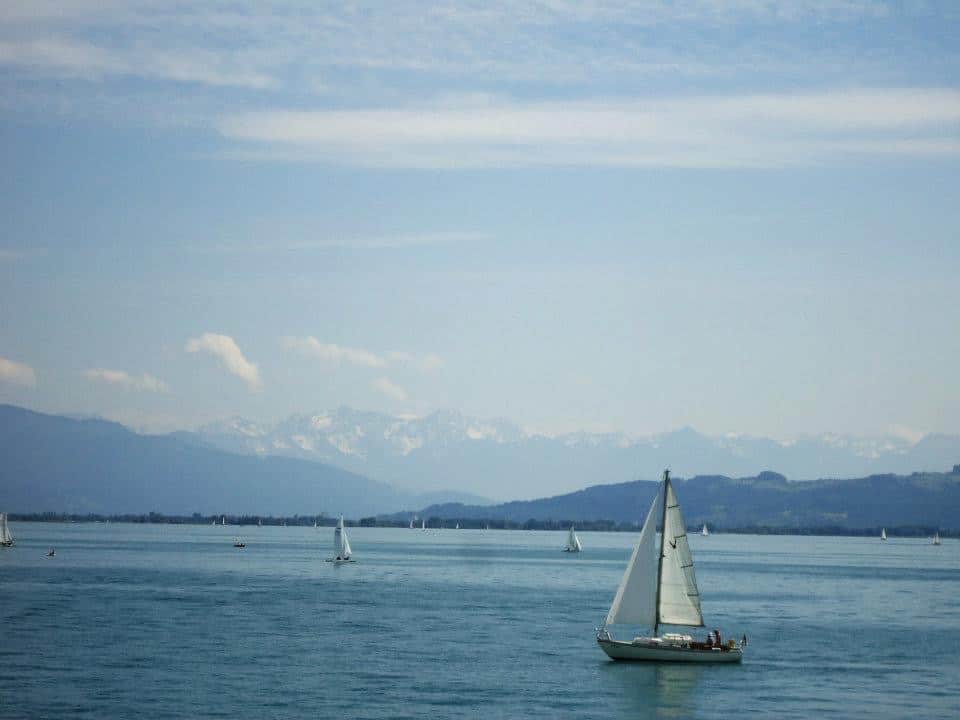
8. Taste the delicious cuisine
The German cuisine is one of the best reasons to visit Germany—especially if you’re into carbs.
Many of the most popular national foods include meat, potatoes, bread, and cheese. Some favorites include:
- Käsespätzle: Small egg dumplings mixed with layers of cheese.
- Currywurst: Sausage served with curry ketchup (popular street food).
- Maultaschen: Meat-filled dumplings.
- Rouladen: Slabs of meat rolled and filled with bacon, onion, and pickles.
- Döner Kebabs: Rotisserie meat served in a pita with vegetables (street food made popular by Turks in Germany).

You also have to walk into a German bakery to sample their vast selection of fresh bread. My stomach is growling thinking about tasting a loaf of Bauernbrot warm from the oven.
The Germans also know how to make dessert. You can’t really go wrong, but here are some of the best things to try:
- Schwarzwälder Kirschtorte: Black Forest Cherry Cake; a layered chocolate cake with cherry filling and creamy frosting.
- Apfelstrudel: A pastry filled with baked apples.
- Streuselkuchen: A crumb cake with various types of fillings.
- Spaghettieis: Ice cream that looks like spaghetti—one of the best German inventions ever.

9. Experience the world-famous Christmas markets
The Christmas season is a popular time for tourists to visit Germany because the Germans do Christmas so well. The Christmas markets are as wonderful as they sound.
Picture rows of wooden booths with local vendors selling a variety of homemade goods, from Christmas tree ornaments to freshly baked sweets to the famous mulled wine (Glühwein).
All the sights, scents, and sounds combine to make the most festive holiday atmosphere. It’s hard not to get into the Christmas spirit when you visit one of these iconic markets.
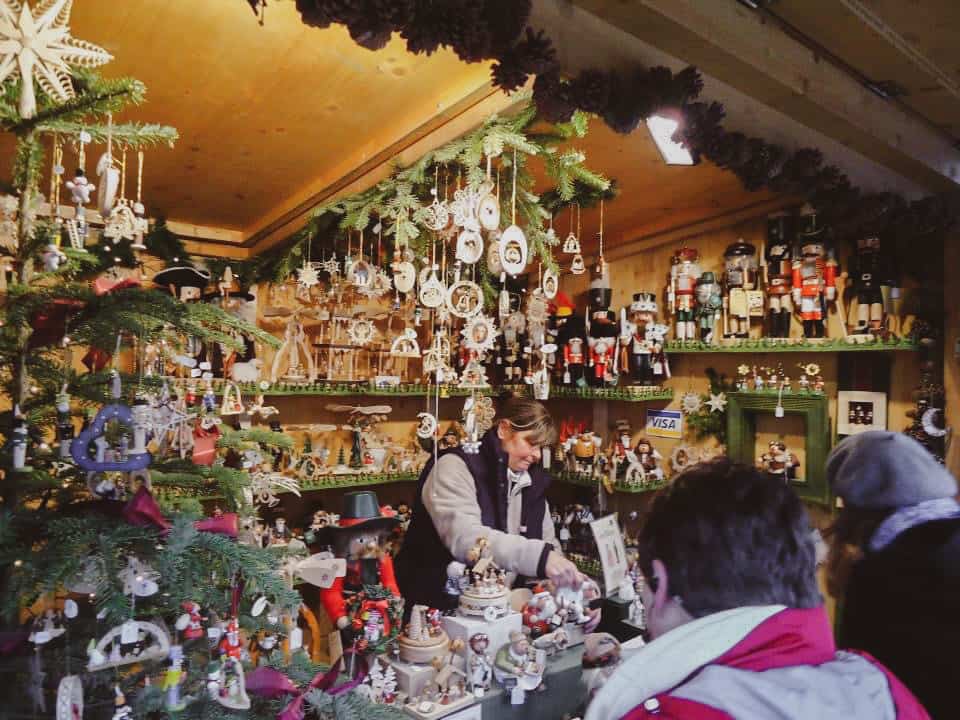
10. Enjoy a relaxing river cruise
Germans love their river cruises, and with good reason. You get an entirely different perspective of the country from the water, with dozens of quaint, historic towns dotted along the riverbanks. You can take an overnight cruise as a way to explore several areas of Germany, or you can simply go on a day tour to a specific town.
One particular tour I loved started in Koblenz, where the Rhine and Mosel rivers meet, and floated to the small town of Cochem, which is known for its vineyards and stunning scenery. (This tour is similar, but rather than stopping in Cochem, it takes you past several castles before returning to Koblenz.)
The Rhine, Oder, and Danube are the three most prominent rivers in Germany, but there are many others. Taking a boat tour on the Spree river in Berlin, for example, is an interesting way to see the city while learning more about its history.
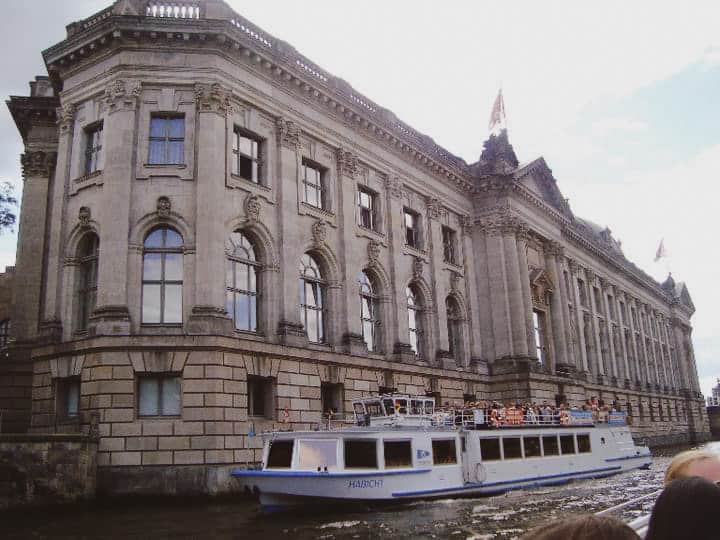
11. Explore picturesque small towns
I love the charm of Germany’s small towns, which make you feel like you are walking back in time. Local governments take great care to maintain the historic architecture of these towns, so you will find many buildings that have been around for centuries.
Mayen is a small town in the volcanic Eifel region of the Rheinland-Pfaltz province, dating back to 847 AD. About 90% of the town was destroyed during World War II, but locals decided to rebuild. The Genovevaburg, first built in the 13th century, and Saint Clemens church, with its crooked spire, are must-sees.
For traditional, half-timbered German architecture, visit the village of Monreal, also in the Eifel region. You’ll think you stepped into a fairy tale as you wander through the narrow streets and see the storied red and white homes with their cheerful flower boxes in the windows.
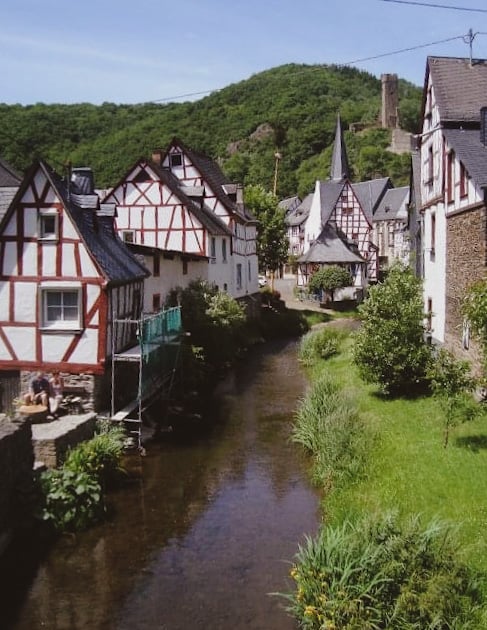
12. Take in the sights of its walkable cities
While small-town Germany is special to experience, it’s worth checking out some of the big cities as well. What I especially like about German cities is how pedestrian-friendly they are.
German drivers generally have more respect for people walking across the street (not the case in places like Istanbul), and there are many pedestrian-only areas that cars cannot access.
Munich is known for its Olympic Tower (after hosting the 1972 Olympic Games), which gives you expansive views of the city. The Marienplatz with the famous Glockenspiel (and delicious Cafe Glockenspiel!) is also fun to walk through.
You also can’t miss the English Garden, a large public park with lots of walking trails—a people watcher’s paradise.
For beer enthusiasts, Octoberfest is one of the most popular festivals in Munich, and the famous Hofbräuhaus that dates back to 1589 is a must-see place as well.
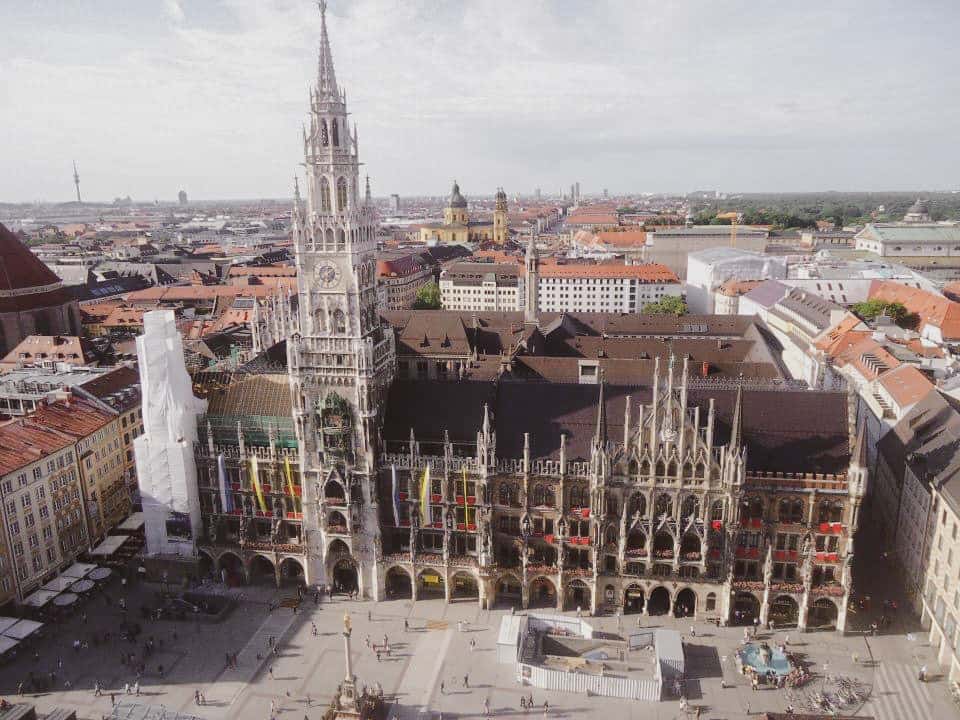
Berlin is popular among history buffs. Learn about Germany’s government system by taking a guided tour of the Reichstag. See the historic Berlin Wall, Checkpoint Charlie, Holocaust Memorial, and other key sights related to World War II. Or skip the historic sights altogether and experience Berlin’s rich food and art scene.
Freiburg is a favorite city of mine. Located in the Baden-Württemburg province in Southern Germany, Freiburg is at the foothills of the Black Forest. It’s a popular university town that comes alive during the academic year, and it’s known for its environmentally friendly infrastructure and many walking and bike paths.
For stunning views of the city from up high, climb to the top of the Castle Tower (Schlossbergturm).
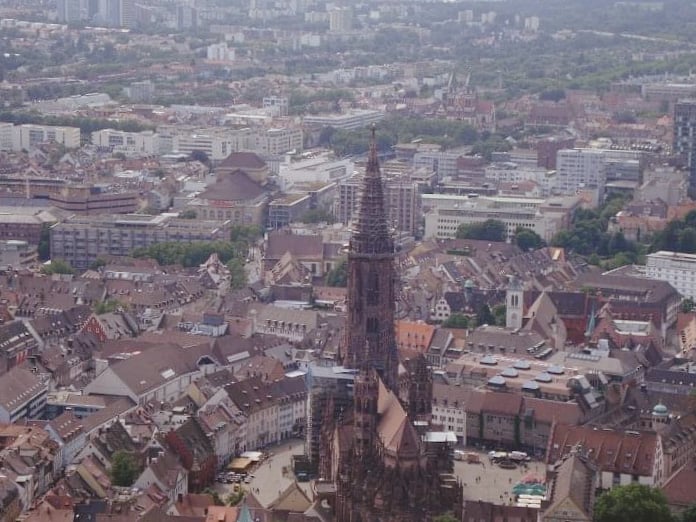
Other interesting cities to visit in Germany include Nürnberg, Hamburg, Frankfurt, Dresden, Cologne, and Heidelberg.
13. See some of the world’s most beautiful churches
Germany is home to many beautiful churches of varying sizes and architectural styles. The Cologne Cathedral (Kölner Dom) is the tallest twin-spired church in the world and is known for its imposing Gothic architecture. Climb the winding staircase to the top for incredible views of Cologne.
Other well-known churches in Germany include the Berlin Cathedral (Berliner Dom), Aachen Cathedral (Aachener Dom), Dresden Church of Our Lady (Frauenkirche), and the Freiburg Minster (Freiburger Münster).

14. Embrace your inner child
Germany is a very kid-friendly country, which you can easily tell by the number of parks and activities they have catered toward children. Even if you aren’t traveling with kids, it’s worth checking out the beloved Playmobil FunPark in Zirndorf.
Playmobil is the German version of Lego (inarguably better than Lego) and this play land is a paradise for creative minds. Dozens of stations are set up where you can build your own cities, farms, landscapes—you name it!
Other fun activities for kids and adults alike include one of Europe’s largest amusement parks, Europapark, the Berlin Zoo, the Deutsche Märchenstraße (German fairy tale road), or the Labyrinth Children’s Museum.

15. Purchase high-quality, natural goods
If you love to shop, that’s another good reason to visit Germany. I have always appreciated the look of products in Germany.
Walk into a toy store and you won’t see cheap plastic products. Instead, you’ll find lots of items made of wood and other natural materials.
The same thing goes for other kinds of products. German designs seem to prioritize minimalism and practicality while still having style.
Germany has also long been a forerunner in sustainable and fair-trade business practices. You’ll come across miles and miles of wind turbines and solar panels harvesting renewable energy.
People often forego driving a car in favor of walking, biking, or taking public transportation. Green living is a way of life there.

16. Use its sleek public transportation
One of the best things about Germany is its intricate public transportation system that can get you pretty much anywhere in the country. There’s no need to rent a car—you can easily get around by train, tram, or bus. The best thing is they run frequently and are almost always on time!
For buses and trams, you can buy tickets directly from the driver or at a machine on board. Train tickets can be purchased from a machine at most stations.
If you plan to travel several different places in Germany, it might make sense to purchase a German Rail Pass that gives you unlimited rides on any Deutsche Bahn trains. Traveling by train is a memorable way to travel through Germany as you get to enjoy the beautiful scenery along the journey.

17. Explore the vibrant arts scene
Germany has a rich history in art and music, and you could easily spend a good chunk of your trip focusing on these two areas. Museum Island in Berlin and the Pinakothek Museums in Munich contain some of the most famous art pieces in Germany.
On the music front, the Berliner Philharmonie is world-renowned. But even sitting in one of the churches to hear someone play the pipe organ is a moving experience.
There are also quirkier artistic scenes to explore, like the Kunsthofpassage in Dresden or Friedrichshain in Berlin.
Art has long been used as a form of protest and remembrance in Germany, as shown on the Berlin Wall. You can learn a lot about Germany’s story and culture just by studying the many outdoor murals and paintings.

18. See the best of German engineering
It’s no secret that Germans have engineered some of the most influential machines and mechanisms in history. The refrigerator, printing press, X-ray, electron microscope, diesel engine and—my personal favorite—gummy bears were all invented in Germany.
Of course, one of the most notable areas of German engineering is in the automotive industry. Germans make amazing cars. You can get a closer look at the process of making these cars by touring the Audi factory in Ingolstadt or visiting the BMW museum in Munich.
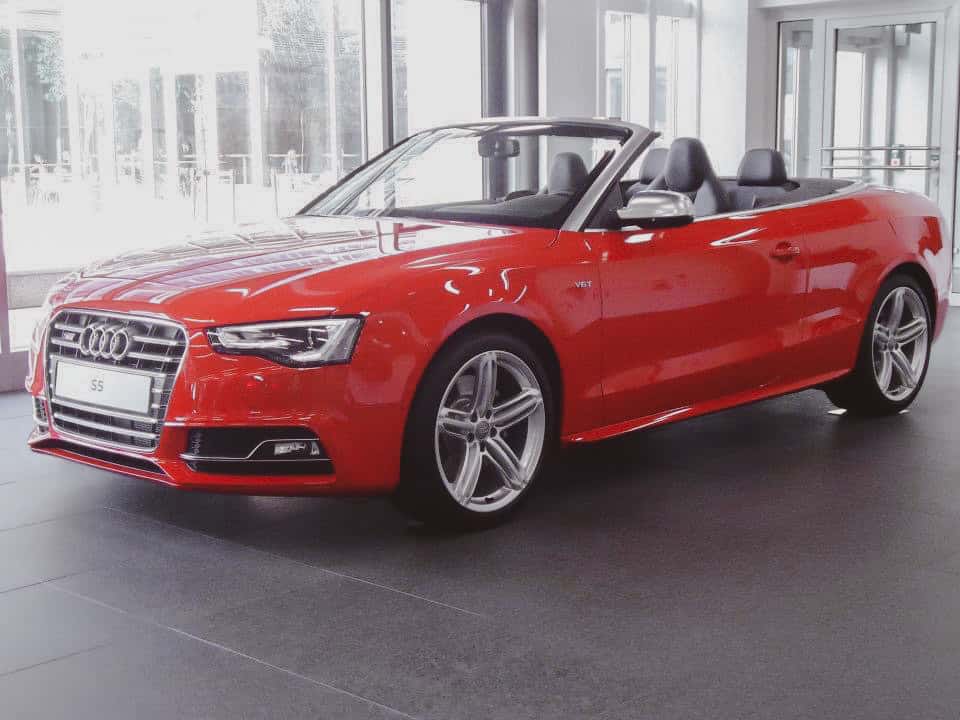
19. Witness soccer enthusiasm at its finest
Germans are serious about soccer. I’ll never forget studying abroad there in 2010 during the World Cup. That year the tournament was in South Africa, but that made no difference in Germany. You could easily have thought the games were happening live there.
All throughout the country you can find public viewings of soccer games during the World Cup and Euro Cup. Prepare to be shoulder to shoulder with thousands of people watching the game from a big outdoor screen. It’s loud, it’s crazy—it’s totally unforgettable.

20. Practice your German
Of course, if you’re learning German or would like to learn German, that’s one of the best reasons to visit Germany as you’ll be surrounded by lots of…German. 🙂
While most Germans, especially in the younger generations, speak at least some English, it’s still nice if you know the basics of the language when you visit. Not only will it help with navigating around the country, but it will also enrich your experience.
When I have visited countries where I didn’t know the language, I had a good time, but it always felt like there was some aspect of the culture I couldn’t tap into. When you understand locals talking in their native language, you learn about the country in a different way than if it the words were translated.
Plus, I have found Germans to generally be gracious if you try talking to them in German. They are usually surprised and happy to see someone learning their language. So give it a go!
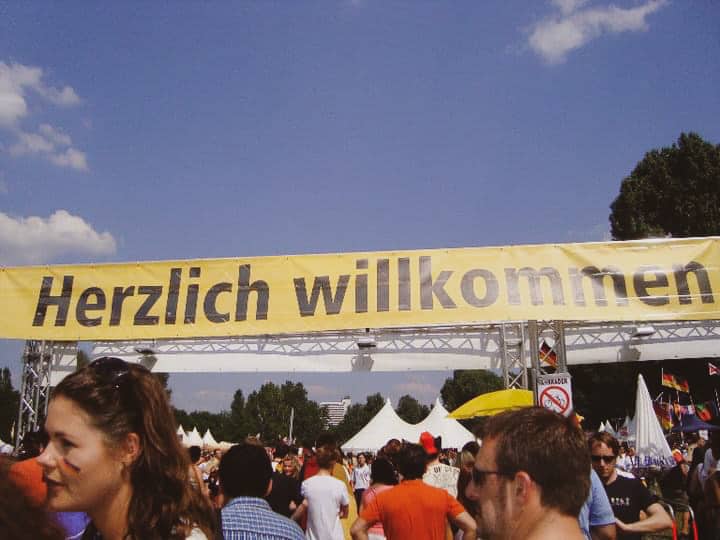
21. Encounter the German people and culture
The biggest reason to visit Germany is to experience the people and learn about their culture. As with any country, people may stereotype Germans and try to lump them all into the same category. However, you will find that Germans are just as diverse in personality and thought as anywhere else.
Don’t rely on stigma; instead, have conversations with locals to learn about their stories and the things they hold dear. You will come away with an even richer experience and memories of specific people to associate with your time in Germany.
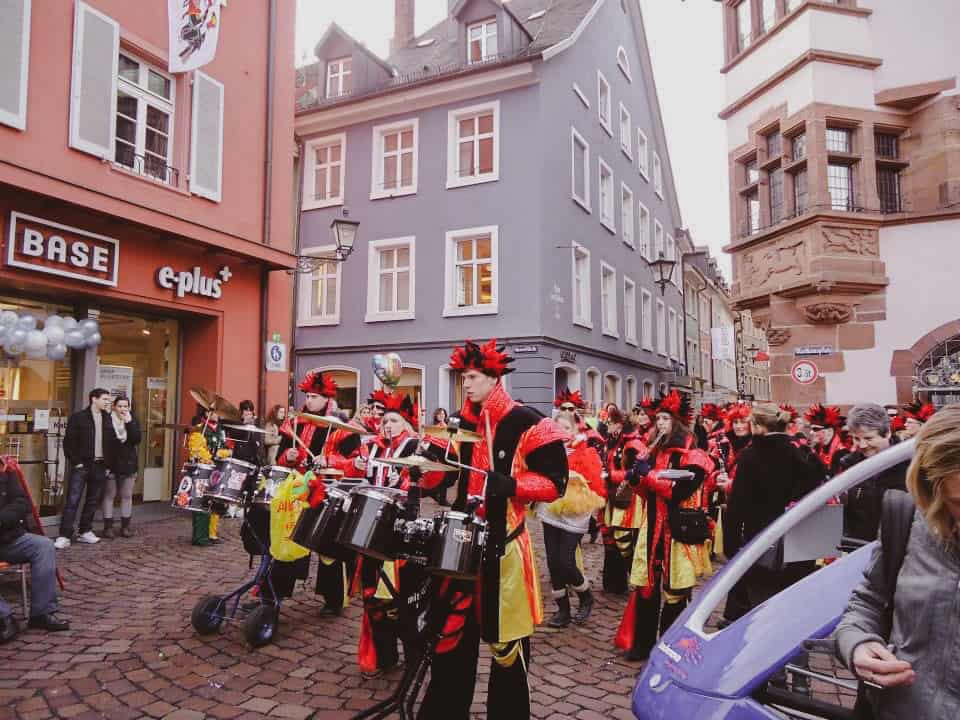
Best time to visit Germany
Germany is a great place to visit any time of the year, so it really depends on what you want to do.
Spring
Spring in Germany still has cooler temperatures and can be rainy, but it’s beautiful to explore in nature with all the trees in full bloom. This might also be a good time to tour Germany’s cities as they come alive after the winter—and before the summer crowds arrive.
Summer
Germany has great summers—warm and full of sunshine. This is the perfect time to swim in Germany’s large lakes or relax on the beach, or take a long hike in the mountains, where the temperatures are refreshing at the higher elevation.
Fall
Fall is a beautiful time to visit Germany and see all the colorful foliage. Exploring in nature would be one of the best things to do this time of year as the temperatures are still mild and the scenery is stunning.
Winter
Visit Germany in the winter if you want to enjoy the many Christmas markets and get in the festive spirit. There are also a number of popular places for skiing and snowboarding, especially in Southern Germany.
Germany itinerary options
Here are a few possible 10-day itineraries for your trip to Germany. If your trip is shorter, simply cut one or more destinations from the beginning or end of the itinerary.
Click More options on a map to open it in Google Maps, and then you can easily add, remove, or move destinations to your liking. Happy planning!
Option 1: East and south Germany
Berlin (2 days), Dresden (1 day), Nuremberg (1 day), Munich (2 days), Füssen/Zugspitze (1 day), Lindau/Bodensee (1 day), Freiburg/Black Forest (2 days)
Option 2: South and west Germany
Berchtesgaden/Königssee (1 day), Munich (2 days), Füssen/Zugspitze (1 day), Lindau/Bodensee (1 day), Freiburg/Black Forest (2 days), Stuttgart (1 day), Heidelberg (1 day), Frankfurt (1 day)
Option 3: West, Central, and South Germany
Aachen (1 day), Cologne (1 day), Koblenz/Mayen/Monreal (2 days), Frankfurt (1 day), Heidelberg (1 day), Nuremberg (1 day), Munich (2 days), Füssen/Zugspitze (1 day)
Option 4: From north to south Germany
Sylt (2 days), Hamburg (2 days), Berlin (2 days), Leipzig (1 day), Nuremberg (1 day), Munich (2 days)
Where to stay in Germany
Use the map below to search for hotel deals in the cities you plan to visit in Germany:
FAQs
Here are answers to some common questions about Germany:
Why should you visit Germany?
Germany has a mix of everything: history, beautiful scenery, rich culture, delicious food – you name it. This country has something for everyone.
If you’re into the arts, you won’t run out of museums, cathedrals, symphony halls, and other attractions to explore. If you’re looking for adventure, you can take advantage of plenty of hiking trails and other outdoor activities.
You could spend your entire visit focusing on the local food, with dozens of regional and national specialties to taste-test.
Germany is a modern country with cutting-edge technology and ongoing innovation, but at the same time, they do a great job of preserving their historic architecture and landmarks. You’ll find an interesting juxtaposition of old and new.
There’s a lot of variety in Germany, making it a fascinating place to visit!
Is Germany friendly to tourists?
Germans somehow get a bad rap in terms of friendliness, and I’d like to dispel that stereotype. While it’s true you may run into unfriendly people, isn’t that true anywhere?
I’ve met some of the kindest Germans during my travels, and if they hear you’re from the U.S. or another English-speaking country, they are usually excited to practice their English with you (which can be frustrating if you actually want to speak German).
German communication can be more direct than in American culture. Germans might want to discuss politics with you, something that is a bit more taboo in the U.S. unless you know people pretty well. But it comes from a place of genuine interest, not malintent.
Is Germany worth visiting?
Yes! Germany is one of my favorite countries to visit. It’s a safe and modern country with a great public transportation system so you can easily travel from place to place.
I love the rich history and beautiful landscapes of Germany. Certain areas will have you feeling like you stepped into an actual Märchenland (fairytale) – Füssen, Cochem, Heidelberg, and Nuremberg, to name a few.
Is Germany expensive to visit?
I think travel in Germany is comparable to the U.S. You can find decent hotels for under €200 per night (and modern hostels for under €100).
Public transportation is an affordable way to travel in Germany and is my preferred method of transportation. Hopping on a train is easy and allows you to sit back and enjoy the scenery. You can expect train fares to start at around €19 per person (increasing based on distance).
Food prices vary depending on the type of restaurant you go to. I’ve been reading that food prices have been increasing in Germany, like so many other parts of the world. (Thanks, inflation.) But one of my favorite things to do in Germany is order a sausage with mustard and a fresh roll from a street vendor – so tasty and cheap!
Are there reasons NOT to visit Germany?
I would say that compared to many other countries, traveling in Germany may not be quite as affordable. If you’re more accustomed to traveling in developing nations, for example, you might experience “sticker shock” in Germany, as well as other parts of Europe.
Germany has a lot of historic sites and museums devoted to educating people about the Holocaust and the Nazi period to ensure history never repeats itself. If this topic is triggering for you, you might want to avoid these places.
I was once on a cruise where I heard a woman talk about her trip to Germany, saying she didn’t like it because she “hates history.” So I suppose if you hate history and don’t enjoy exploring old architecture, Germany may not be as appealing to you. 🙂
But like so many places in the world, I think there’s something for everyone in Germany. You just have to go looking for it.
Top things to do in Germany
I’ve shared so many fun things you can do in Germany throughout this post, but here are a few of my top recommendations:
Take a castle tour: There are more than 20,000 castles in Germany. Neuschwanstein and Burg Eltz are two of my all-time favorites.
Visit museums: Whether you’re into culture, art, cars, and more, there are many museums across the country where you can learn about Germany’s rich history. I really enjoyed the Wall Museum near Checkpoint Charlie in Berlin and the Audi Museum in Ingolstadt (outside of Munich).
Explore top cities: Berlin, Munich, Nuremberg, Hamburg, Freiburg, Cologne, and Dresden are must-sees, with each place offering a variety of art, culture, history, and food scenes.
Order Spaghettieis: Yes, Germans invented an ice cream version of the popular Italian pasta dish. You’ll be served a bowl of ice cream “noodles” topped with a fruit sauce. It’s absolutely delicious, and I’ve never seen it anywhere else!
Visit the flower island: Off the southern coast of Germany, on the stunning Lake Constance, is the island of Mainau that you can get to by ferry. This island is known for its variety of flower displays – an especially beautiful place to see in the spring!
Try local wine: Rheinland Pfaltz is a province on the west side of Germany that is known for its many vineyards. Cochem is a lovely town along the Mosel River that’s a must-see place in this wine region.
Visit the Christmas markets: If you’re planning a winter trip to Germany, you can’t miss experiencing one or more of the Christmas markets. Order delicious mulled wine and other treats and enjoy browsing the many kiosks to find handmade treasures.
Why I love Germany
Germany will always have a special place in my heart because I spent a good part of my childhood there and visited several times since then. It’s a family-friendly place with no shortage of things for both adults and children to do.
So why do I love Germany?
I love the way Germans celebrate holidays like Christmas and Easter, with ornate displays and festive activities to be found everywhere. And I love how excited they get about the World Cup.
I love seeing their passion for being outdoors and appreciating nature. Germans always seem to look for ways to “opt outside.”
I love their innovation and the way they champion environmentally friendly living, as well as advancements in healthcare and technology.
I love their ongoing desire for progress and moving forward from the past.
Germany isn’t a perfect place, just like anywhere else, but it’s a beautiful country filled with history, art, music, and delicious food.
I hope you’ll consider a visit to Germany and come away loving it as much as I do!
Enjoyed this post? You might also like:




